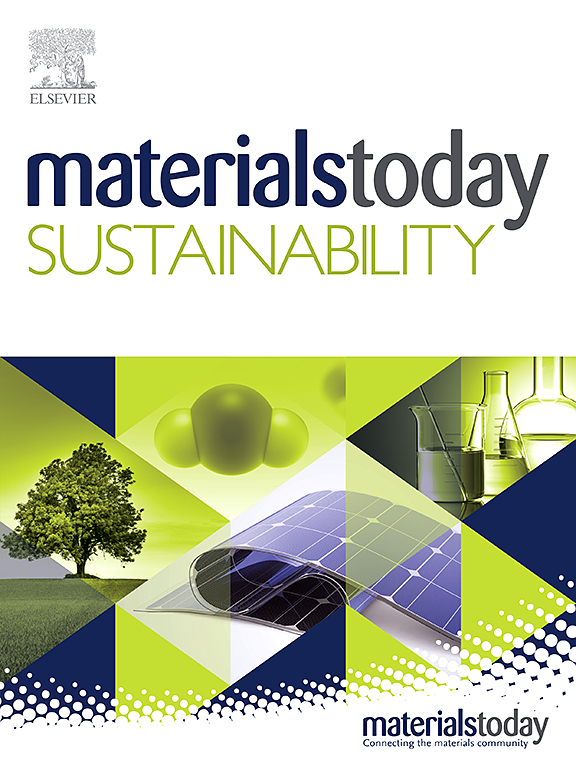Trends and perspectives on bacterial nanocellulose: A comprehensive analysis from the three helixes of innovation
IF 7.1
3区 材料科学
Q1 GREEN & SUSTAINABLE SCIENCE & TECHNOLOGY
引用次数: 0
Abstract
Bacterial nanocellulose (BNC) stands out as a nanocrystalline material with a wide range of unique properties, including high mechanical strength, biodegradability, biocompatibility, and transparency. This versatility has attracted great interest in various fields, from biomedicine and materials engineering to the food industry and environmental technology. The present study focused on assessing the impact of BNC's scientific production within the framework of the three helixes of innovation and identifying trends in research and technological development. To this end, a comprehensive bibliometric analysis of 4814 peer-reviewed articles published between 2013 and 2023 was conducted, using the SCOPUS database and analyzing the information through Rstudio's Bibliometrix package. The results revealed an approximate annual growth of 15.67% in BNC's scientific output, with an average of 33.56 citations per paper. China was positioned as a leader in this output, backed by strong government commitment and considerable funding for sustainability-focused research. It is notable that BNC studies contribute mainly to the Sustainable Development Goals (SDGs), with SDGs 3, 6, 7, 9, 12, and 17 standing out. Despite the current trend towards process optimization and exploration of BNC-producing microorganisms, a lack of research in life cycle analysis and techno-economic analysis was identified. It is suggested that the implementation of biorefinery approaches, the utilization of residual biomass, and the evaluation of energy efficiency and exergy analysis could potentially significantly improve the process of obtaining BNC, providing a more sustainable and efficient approach to its production with multiple applications in various industrial sectors.

细菌纳米纤维素的发展趋势与展望:从创新的三个螺旋出发的综合分析
细菌纳米纤维素(BNC)作为一种纳米晶体材料,具有广泛的独特性能,包括高机械强度、可生物降解性、生物相容性和透明度。这种多功能性吸引了从生物医学和材料工程到食品工业和环境技术等各个领域的极大兴趣。本研究的重点是在创新的三个螺旋框架内评估BNC的科学生产的影响,并确定研究和技术发展的趋势。为此,利用SCOPUS数据库,通过Rstudio的Bibliometrix软件包对2013年至2023年间发表的4814篇同行评议文章进行了全面的文献计量学分析。结果显示,BNC的科学产出年增长率约为15.67%,平均每篇论文被引用33.56次。中国在这方面处于领先地位,这得益于政府的坚定承诺和对以可持续发展为重点的研究的大量资助。值得注意的是,BNC研究主要对可持续发展目标(sdg)做出了贡献,其中可持续发展目标3、6、7、9、12和17尤为突出。尽管目前的趋势是对产bnc微生物的工艺优化和探索,但在生命周期分析和技术经济分析方面的研究不足。结果表明,生物精馏方法的实施、剩余生物质的利用、能源效率评价和能源分析可以显著改善BNC的生产过程,为BNC的生产提供更可持续和高效的方法,并在各个工业部门得到广泛应用。
本文章由计算机程序翻译,如有差异,请以英文原文为准。
求助全文
约1分钟内获得全文
求助全文
来源期刊

Materials Today Sustainability
Multiple-
CiteScore
5.80
自引率
6.40%
发文量
174
审稿时长
32 days
期刊介绍:
Materials Today Sustainability is a multi-disciplinary journal covering all aspects of sustainability through materials science.
With a rapidly increasing population with growing demands, materials science has emerged as a critical discipline toward protecting of the environment and ensuring the long term survival of future generations.
 求助内容:
求助内容: 应助结果提醒方式:
应助结果提醒方式:


